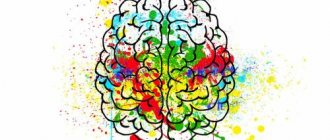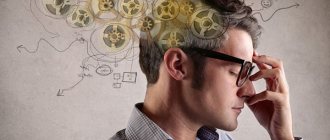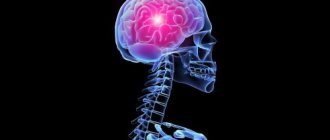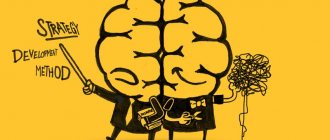Hello, Marina!
Let's figure it out and restore faith in ourselves. I assume that self-esteem decreased precisely after the divorce. The main and most important thing for you is that self-esteem is not constant and it can change depending on circumstances.
Most likely, your husband, on the eve of the divorce, contributed in every possible way to lowering this notorious self-esteem in you. Apparently he was an important person for you. Perhaps he allowed the statements “You are nothing without me!”, “Who needs you”?
The tendency of a person to evaluate himself the way others evaluate him is inherent in many people. But this is not the ultimate truth, but a reason to prove to yourself and others (in this case, your ex-husband) that everything is just the opposite!
Of course, no encouraging phrase will solve the situation instantly. Here you should approach it systematically.
Why my principles of self-development can help not only me
I am well aware of the main weak point of any attempt to philosophize on the subject of universal human categories. This Achilles heel, which makes many arguments about human personality shaky and vulnerable to criticism, is the identity of the subject and object of knowledge in the matter of understanding people. The conclusions that I made and the rules that I derived greatly helped me in life. They work great for me. But I don't claim complete universality. I admit the possibility that someone may develop according to different laws, and in general, all people are structured differently, and my advice may not suit someone, and the general train of thought may not be entirely correct.
But, firstly, I, as a product of my time and my culture, can assume the presence of commonality in the sphere of concepts, ideas, laws of thinking with other people. We are all products of the same society, which educates us, with which we interact and, accordingly, have similar problems, desires and expectations.
Secondly, I actively communicate with people and constantly notice that they are captive of the same prejudices, myths and misconceptions about themselves and their capabilities. Having been exposed to these myths myself, I am well aware of the detrimental effect these prejudices can have on the development of individuality. Since childhood, many have professed the same erroneous ideas about a person, then I will tell you what these ideas are.
I see how many smart and capable people are shackled by irrational fears, inexplicable and groundless self-doubt and in their abilities, and are in the dark about where they need to go in general and what they need to be happy? I managed to understand the reasons for these same fears and cope with them. And I still struggle with this. And if you yourself get rid of such prejudices, this will bring you much closer to realizing your own goals and managing your life. And it doesn’t matter how different we all are. Everyone has common shortcomings and weaknesses.
Third, the actions that resulted from implementing my self-improvement system brought me closer to harmony and a true understanding of my goals. So this practical result, which I can always see, gives me confidence in the correctness of what I am about to tell right now.
My system, which describes personal self-improvement , is based on two forces, will and reason.
Here's what to do!
Step 1: Self-preservation
I offer you a set of preventive measures so that your self-esteem does not drop to zero.
Take your album of childhood photos. I'm sure there are a lot of pictures of you smiling. Stay a little in your memories, and then take a piece of paper and a pen and conduct the following analysis: for what reason were the smiles captured.
I imagine the list might be something like this:
- you are happy after a successful performance at a matinee in kindergarten,
- you rejoice at winning the school relay race,
- you are smiling at some boy...
After the list is completed, on another sheet of paper, maintaining the sequence of the first list, write down your qualities/abilities/skills that led to this result - a smile on your face.
It would look something like this (given my examples in the first list):
- good memory, acting skills;
- reaction speed, endurance;
- external attractiveness, internal beauty.
Of course, you can say: “Well, when it was, now it’s gone...” In this state, you simply do not see what you have. But this is the same person in the photographs and now in reality. It's still the same Marina!
And all the skills/abilities/talents/abilities, all your beauty and attractiveness, determination (you turned to Our Psychology) and the desire to find support have not gone away!
Step 2. Raising self-esteem
And after the first set of self-preservation measures, we move on to a set of measures to restore self-confidence, that is, to raise self-esteem. We do the following:
- 1. Gather your former classmates, or classmates, or friends from the children's yard for a meeting. Sit and remember. You will find a reflection of your former self in their memories. And this will be a resource for restoring your self-image now. After all, before the divorce everything worked out, everything was fine, there was no self-doubt. Right? Otherwise, you would not have told us exactly when you lost faith in yourself.
- 2. The next step is some transformation. Go to a salon, change your hairstyle, buy yourself something that will require some courage to wear. And go in this outfit somewhere a little further than your area. Perhaps to the region or to another city. Collect there admiring glances addressed to you from complete strangers!
- 3. Well, the next, final step is to rehearse the upcoming interview for a position in front of a video camera. See what needs to be corrected, record it on video again, watch it. And so on until the latest version suits you in everything.
By the time of the video recording stage, you will have enough resources to regain your confidence, which will greatly increase your chance of getting a job.
If you fail at an interview, the spirit of competition should kick in, and the next attempt will certainly be successful! question-answer motivators motivation practicum practical psychology self-esteem
Psychology of personality self-developmentM. A. Shchukina, 2020
1.1.2. Ideas about self-development and self-developing systems in synergetics
It’s great if we can manage ourselves.
Cicero
Self-development has received the status of a general scientific category within the modern field of interdisciplinary knowledge - synergetics. If dialectics is a philosophical concept of self-development, then synergetics “acts as scientific knowledge about self-developing systems” [Stepin, 2003a, p. 9], “serves as a natural scientific clarification of the principle of self-motion and development of matter” [Philosophical Dictionary, 1989, p. 583].
Using the methods of natural science knowledge within the framework of synergetics, empirical studies of the processes of self-development, self-organization, and self-government of systems, which were previously only hypothetically described in philosophy and the humanities, are carried out. However, according to philosophers of science, calling synergetics a new cognitive model and a new universal explanatory principle would be incorrect [Kapitsa, Kurdyumov, Malinetsky, 2003; Mikhailovsky, 19946]. As V.S. Stepin notes, “system-structural characteristics of self-developing systems and the corresponding categorical apparatus were initially developed in philosophy based on the material of socio-historical objects (including the development of spiritual culture)” [Stepin, 2003a, p. 9]. Attempts to introduce the principles of synergetic cognition as mandatory for application into the social and human sciences, in particular psychology, seem especially unjustified. Direct borrowings at the level of empirical methods, notes V.E. Klochko, are “a real synergetic reductionism in the form of “physicalization” of psychology” [Klochko, 2005, p. 17]. Synergetics should act “not as a dogma or even a guide to action, but as a way of looking at a problem, which sometimes turns out to be useful in essence” [Kapitsa, Kurdyumov, Malinetsky, 2003, p. 14]. The use of synergetics methods is effective when it comes to studying the processes of self-development, self-organization in states of instability, uncertainty, and nonequilibrium [Knyazeva, Kurdyumov, 2002]. “The expansion of synergetic methods into various sciences,” points out V. S. Stepin, “is effective where and when it is necessary to take into account self-development, its integral characteristics and patterns” [Stepin, 2007, p. 99].
A.V. Ryzhkov [2006] identifies three directions in modern research on self-developing and self-organizing systems:
✓ cybernetic approach, within which the study of self-organization of complex open systems operating through continuous processes of exchange of matter, energy and information with the environment is carried out. This approach, according to A.V. Ryzhkov, only partially explains the processes of systems evolution;
✓ synergetic approach (I. Prigozhin, G. Haken, S. P. Kurdyumov, etc.). Works in this area are empirical in nature, but there are also authors, for example S. P. Kapitsa, S. P. Kurdyumov, who work on a methodological understanding of synergetics;
✓ a systematic approach to the fundamental theory of self-organization, interpreting synergetics as the concept of self-developing systems (V. S. Stepin, K. X. Delokarov, G. N. Pivovarov, V. G. Budanov, V. P. Bransky, E. N. Knyazeva , A.P. Nazaretyan).
Synergetics as systemic knowledge about self-developing systems is methodologically closest to human knowledge. In the context of our work, it is advisable to turn to works of a methodological nature, where synergetics is conceptualized as a type of scientific worldview, within which self-development is one of the central categories. One can agree with V.E. Klochko is that synergetics allows “to look at a person through the prism of becoming and see him in it as an integral open self-organizing system, the progressive and natural complication of the systemic organization of which is the basis of its sustainable existence” [Klochko, 2005, p. 17]. The wide heuristic capabilities of synergetics, according to V. A. Barabanshchikov, are associated with the fact that it allows us to move from the structural and functional analysis of systems to the analysis of the processes of self-organization and self-development of systems, the genetic side of their existence. In the “new picture of the world” built by synergetics... a deeper understanding of real time is introduced, which is not reducible to chronometry and chronology. The continuity of complex systems in a transition state is emphasized. Attention is drawn to the multiplicity of ways and strategies for the development of a self-organizing system in a given environment. The most important role of chance is noted. The potential existence of the system and the conditions for its implementation are of fundamental importance. The attitude towards uncertainty is changing, which is qualified not as an obstacle to knowledge, but positively, as an opportunity to create and understand” [Barabanshchikov, 2008, p. 8].
The undoubted merit of synergetics is that, through the application of empirical methods, it brought the theory of self-developing systems to a new level of verification. On the one hand, the results of synergetic research made it possible to concretize a number of dialectic provisions: “What in the traditional dialectical description of development was not structurally analyzed, but was simply designated as a “leap”, “break of gradualness”, “transition to a new quality”, has now become the subject of scientific research. analysis" [Stepin, 2003a, p. 9]. On the other hand, new generalizing results were obtained. Thus, if previously, predominantly biological and social systems were recognized as self-developing, then in synergetic studies it was possible to discover that the mechanisms of self-development and self-organization are inherent in any systems, including those of a physical and chemical nature. The determining factor turned out to be the size of the system, not its nature. In the 1970s, G.N. Pivovarov proposed to distinguish between types of systems according to the number of elements and the nature of the connections. According to the proposed typology, small (simple) systems include about 103 elements, large (complex, self-regulating) - up to 106 elements, self-developing - from 1010 to 1014 elements [Stepin, 2003a, p. 5].
Understanding not the quantitative, but the essential characteristics of systems at various levels is the merit of V. S. Stepin [1997; 2003a; 2007] - the author of the idea of post-non-classical rationality. According to his approach, the connections and relationships inherent in each type of system can be characterized in the categories of part and whole, thing and process, causality and chance, possibility and necessity, space and time.
In small
(
simple
)
systems,
the total properties of their parts exhaustively determine the properties of the whole, the part has the same properties inside and outside the whole, the connections between the elements are subject to linear causality, the movement of such systems does not affect the characteristics of space and time in any way.
Large (complex self-regulating
)
systems
are differentiated into relatively autonomous subsystems, where the interaction of elements is stochastic. The whole is no longer reduced to the sum of the properties of the parts; a special systemic property arises; a part inside and outside the whole has different properties. Large systems are homeostatic (homeostasis here is equated to self-regulation), they have a control unit, a functioning program that determines control commands and adjusts the behavior of the system based on feedback. Along with the concept of external time, the concept of internal time is used when describing large systems. The deterministic concept of causality turns out to be insufficient here and is supplemented by the ideas of “probabilistic” and “target causality.” The first characterizes the behavior of the system, taking into account the stochastic nature of interactions in subsystems, the second - the action of the self-regulation program as a goal that ensures the reproduction of the system" [Stepin, 2003a, p. 6]. In relation to self-developing systems, which are characterized by transitions from one type of homeostasis (self-regulation) to another, complex self-regulating systems act as a special state of the dynamics of a historical object, a kind of cut, a stable stage of its evolution.
Self-developing systems
have specific synergetic characteristics: “They are characterized by a hierarchy of level organization of elements, the emergence of new levels as they develop with a new differentiation of the system into subsystems, with each new level changing them, and the system functions as a new whole.
The emergence of new levels of organization and the transition to a new type of homeostasis occurs through states of dynamic chaos, the emergence of bifurcation points, in each of which a spectrum of potentially possible directions for the development of the system arises” [Stepin, 2007, p. 101]. The whole no longer just has a system quality and a control unit - its system quality and a control unit change with the development of the system, as evidenced by the emergence of new control parameters. Likewise, internal space-time is not just present, but is also transformed as the system changes. Of particular importance at the level of self-developing systems are the ideas of target causality and direction of development, and this “direction should not be interpreted as a fatal predetermination. Random fluctuations in the phase of restructuring the system (at bifurcation points) form attractors, which, as a kind of program goals, lead the system to some new state and change the possibilities (probabilities) of the occurrence of its other states” [Stepin, 2003a, p. 8]. It is extremely important that these attractors are not external to the system, but are inherent in it itself. S.P. Kurdyumov emphasizes in this regard: “The environment (here the environment is understood as a system. - M.Shch.)
has its own development goals, its own attractors. And they must be taken into account... It cannot be forced, it cannot be imposed on it... What is imposed on the environment, but does not correspond to its energy, will be unstable and will fall apart” [Kurdyumov, 1997, p. 150]. Let us note that these kinds of ideas are not an innovation of synergetics - they can be found in various knowledge systems, starting from antiquity. The achievement of synergetics is that the named patterns exist in synergetics not in the status of theoretical assumptions, but as phenomena discovered in the course of empirical research.
Thus, those parameters that were used to describe self-regulating systems, in the case of self-developing systems, acquire additional complexity due to the fact that each of them is not in a static, but in a dynamic state. Hierarchy, integrity, causality, spatio-temporal characteristics of the system are developing. It is important that, while undergoing changes, the system maintains its identity and integrity. V. N. Mikhailovsky [19946], describing the features of the existence of self-organizing systems, mentions, in particular, the principle of invariance and the property of structural stability. The principle of invariance, proposed by W. R. Ashby, is that some properties of the system (invariants) remain unchanged, despite the fact that it undergoes successive changes. According to the principle of structural stability, the system resists external influences, initiating processes that can suppress and neutralize these influences.
Systematizing conceptual ideas about self-developing systems, A.V. Ryzhkov also calls structural stability (or structurality) an attributive property of self-developing systems. He defines self-developing systems as “a special type of integrity, which consists of the interconnection of bodies of existence and their environment, reflecting the unity of material and procedural aspects of development” [Ryzhkov, 2006, p. 12] and identifies the following attributes of self-developing systems: structure, hierarchy, organization, complexity. Analyzing the processes of self-organization, self-regulation, self-development, self-tuning that occur during the constant change of self-developing systems, A. V. Ryzhkov establishes their functions and the nature of interaction. With the evolutionary ascent of self-developing systems, the level of their organization increases, the structures become more complex, new types of self-regulation emerge, and potential structures become actualized and revealed. The process of updating structures becomes possible thanks to the joint action of the processes of self-regulation and self-organization. According to the concept of A.V. Ryzhkov, self-regulation and self-organization are two sides of self-developing systems: static and dynamic. “The static side reflects the activity of the system aimed at preserving its structures - invariants.
The dynamic side is represented by actions aimed at their destruction, and then at the establishment of new types of self-regulation” [ibid.]. The author defines self-development as the activity of self-developing systems, which is aimed “at establishing a constantly disrupted balance of functional subsystems” [ibid., p. 13]. Self-tuning refers to the activity of coordinating the functional subsystems of self-developing systems.
In the development of systems, A.V. Ryzhkov distinguishes evolutionary and revolutionary stages, which is also typical for dialectical ideas about development. At the evolutionary stage of self-development, the forces of self-regulation of the system are aimed at adapting to changing environmental conditions while maintaining the existing control parameters of the system. At the revolutionary stage, processes of self-organization and self-development predominate, leading to a change in the quality of the system, which occurs “as a result of system objects reaching the limits of measure - those values of control parameters at which self-developing systems lose their stability. The new qualitative state after the bifurcation will be characterized by new values of control parameters, to which self-developing systems will subsequently adapt” [ibid.]. The author sees the difference between synergetic and dialectical approaches not in the understanding of the stages of self-development, but in the interpretation of its sources. If in dialectics the internal contradictions of the system are recognized as the main sources of self-development, then for synergetics “the main contradictions of self-developing systems are the contradictions of their contradictions” [ibid., p. 14]. This provision of the synergetic approach to self-development allows us to understand self-development not as a consequence of individual adjacent contradictions (as, for example, in the above-mentioned work of A. N. Rosenberg [1988]), but as a result of the hierarchical relationship and interaction of the contradictions of the system.
A. V. Ryzhkov’s ideas regarding the goal and final outcome of the existence of self-developing systems are interesting. He talks about a kind of “death” of self-developing systems, in which they go into “their simplest state, and then repeat their path again” [ibid., p. 15]. The reason for such an ending is the system’s exhaustion of the resource of its structural and functional changes, its achievement of the ceiling of complexity, the ultimate goal of its existence. A.V. Ryzhkov calls superactualization the main, ultimate goal, superattractor of self-developing systems.
Close to this understanding of the goal of self-development of systems are the ideas of A. M. Kovalev [1999] about the basic law of the natural world, which determines the direction of development of the system. In his opinion, the essence of the basic law and the goal of systems development is optimal self-realization. “At the same time, self-realization includes both self-preservation and self-organization, that is, the development of material structures” [Kovalev, 1999, p. 273]. Self-realization of systems is manifested, “firstly, in their ability to create from these elements formations that are more active in comparison with the environment, as well as structures that are more advanced in comparison with previous ones. Secondly, the ability of these neoplasms to be stable, self-preserving and, at a certain stage, self-reproductive. Thirdly, in the ability of these created more active new formations to use and process elements of the environment in the interests of increasing their own activity” [ibid., p. 283]. Considering self-realization as the goal of the functioning of all systems existing in the world, the author emphasizes that the self-realization of each system contributes to the self-realization of the whole of which it is a part.
Revealing the mechanism of self-realization, A. M. Kovalev draws attention to the fact that we are talking about self-realization, i.e. the leading importance of the internal factors of the system’s implementation: “No conditions can realize the essence if internal incentives, potentials and mechanisms have died out in it such a realization" [ibid., p. 285]. The author emphasizes that the basis of any change is ultimately the activity organically inherent in the material substance, and the threshold of activity, which sets the “ceiling” of the self-development of the system, is determined by the energy potential contained in it.
Energy support for self-development is considered in the study of M. M. Golansky. The author makes a distinction between self-organizing and self-developing systems, considering the latter to be a variety of the former [1971, p. 34]. A self-developing system, in his opinion, is capable of not only modifying its structure and choosing a line of behavior when interacting with the environment, as a self-organizing system does, but also independently establishing a trajectory of equilibrium (movement) for itself. Self-developing systems are defined as stable systems with feedback, i.e. those that transform not only the environment, but also themselves, because the transformation performed by the system on itself is called feedback. “A stable system is a feedback system, the sequence of actual states of which tends to a certain trajectory (norm)” [ibid., p. 7]. The author identifies two types of stable systems: 1) stable systems for which the norm is set exogenously, from the outside; 2) stable systems with endogenously determined norms. “The first perform only tactical operations, that is, they overcome deviations from the norm prescribed by the environment.
These systems do not themselves participate in the process of norm formation. The latter, in addition to tactical operations, also carry out strategic operations, that is, they develop their own norm” [ibid.]. It is the systems of the second type that the author calls self-developing. Thus, in the concept of M. M. Golansky, a self-developing system is a stable system with feedback, focused on a norm independently determined by it, or, in the author’s definition, “a goal-oriented system that maximizes the strategic target factor by changing its composition and structure” [ibid. , With. 10].
In contrast to the development of stable systems, which occurs due to the energy of the external environment, the movement of self-developing systems occurs due to the energy coming to the input of the system from its output through the environment, emphasizes M. M. Golansky. “The more such energy comes from the output to the input of a self-developing system, the further the system can move along the optimal trajectory, and therefore, the higher the values of the strategic target factor the system can achieve. This means that a self-developing system, in pursuit of the maximum of the strategic target factor, must always maximize the output of energy spent on moving along the optimal trajectory. Consequently... such self-propulsion energy itself is the target factor of the system” [ibid., p. 12]. In other words, the more energy the system itself invests in its development, the higher the level it reaches, and for investment to occur, the system must set itself the goal of generating energy for development.
Thus, a synergetic view of self-developing systems allows us to understand them as hierarchically organized complex systems, which, due to the systemic contradiction of contradictions, are in constant change, accompanied by a change in the types of self-organization and self-regulation while maintaining invariant structural components.
Recommended books
I recommend reading the following self-development books:
- "Good to Great" Jim Collins
- “How to Win Friends and Influence People” by Dale Carnegie
- “Aversion to change. How to overcome resistance..." Robert Keegan
- “Psychology of Champions. The mindset that leads to winning in sports" Bob Rotella, Bob Cullen
- “The Art of Managing Your Time” by Bodo Schaefer
- “Liminal thinking. How to go beyond your boundaries..." Dave Gray
- “We change habits. 81 Ways to Stop Acting on... M.J. Ryan
- "Do not be sorry about anything. And 99 more rules for happy people" Nigel Cumberland
- "Act smartly!" Brian Tracy
- “Logic and tactical thinking. 50+50 problems for training..." Charles Phillips
- “Self-discipline. Personal Development" Michael Wilson
- "What is stopping you?" Sue Hadfield
- “Start small” Owain Service
- “Instead of an MBA. Useful tips from legendary managers" Jack Welch
- “The Book of the Lazy Guru. Flow. Results. Effortless" Lawrence Shorter
- “Positive time management. How to have time to be..." Maria Heinz
- "Be Strong" Nick Vujicic
- Personal Finance Christian Maddock
- "The Psychology of Habit" by Harold Little
- “Life management. The art of managing your life" Inessa Alenson
- “How to work 4 hours a week and not be stuck in the office from bell to bell, live anywhere and get rich” Timothy Ferris
- "Great work. How to find inspiration, love your job and start making money" David Sturt
- “Improvisation lessons. How to stop planning and start living" Patricia Madson
- "Reboot. Rewrite your story - change your life Jim Lauer
- "The magic of the morning. How the first hour of the day determines your success." Hal Elrod
- “The power of charm. How to Win Hearts and Succeed" Brian Tracy, Ron Arden
- "The 7 Habits of Highly Effective People: Powerful Personal Development Tools" Stephen Covey
- "Rich Dad Poor Dad" Robert Kiyosaki
- "Atlas Shrugged" by Ayn Rand
- "Awaken the Giant Within" Anthony Robbins
- “Get out of your comfort zone. Change your life. 21 methods for increasing personal effectiveness" Brian Tracy
- “Transurfing of reality. Stage I: Space of options" Vadim Zeland
- “The Subtle Art of Not Giving a F*ck: A Paradoxical Way to Live Happily” Mark Manson
- “Think like a millionaire. 17 lessons of wealth for those who are ready to get rich" T. Harv Eker
- "The Richest Man in Babylon" George Samuel Clason
Save the list of books to your bookmarks so you don’t lose them!










